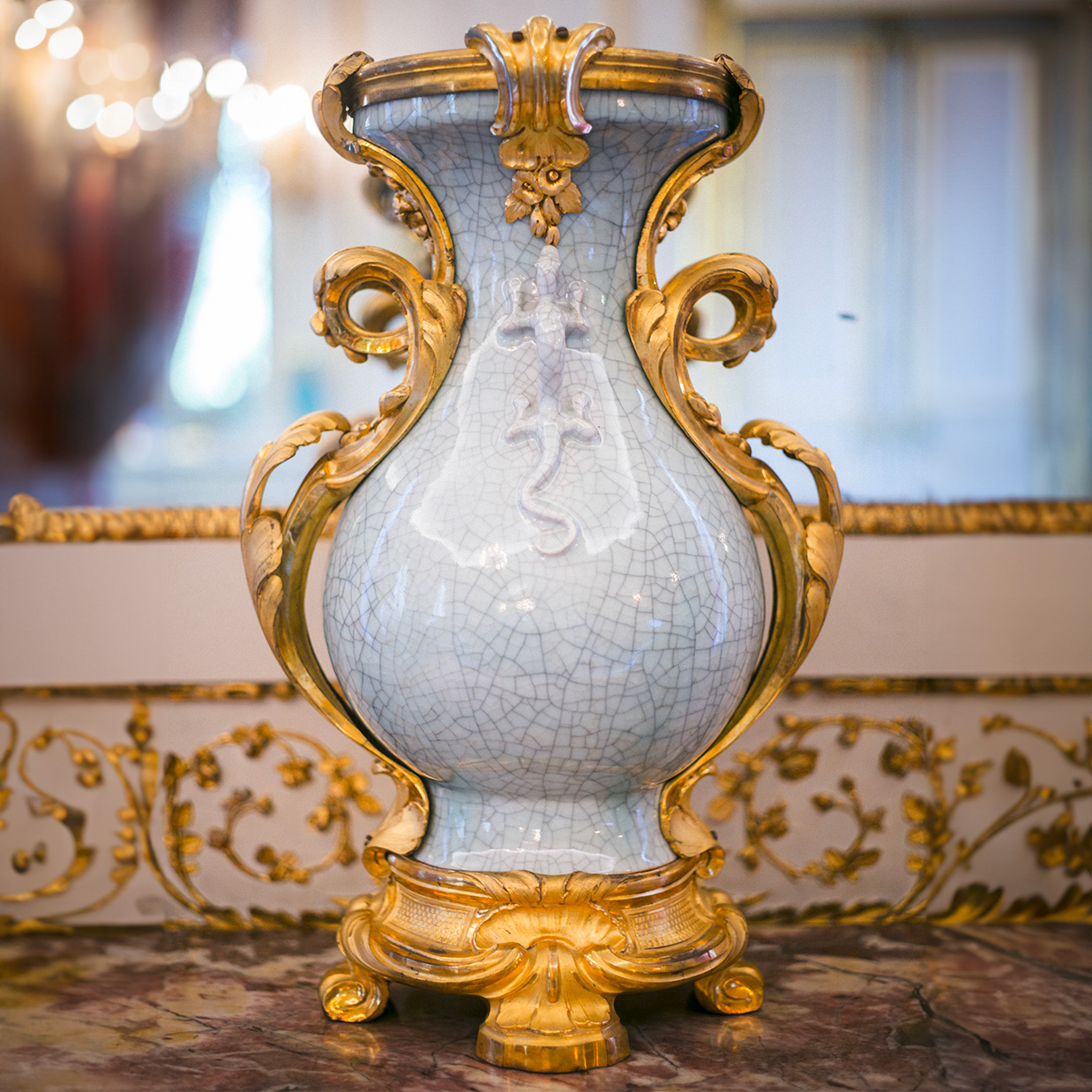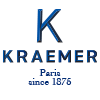IN THE MUSEUMS
Two large celadon vases – Louis XV era
Two large celadon vases featuring chiselled, gilded openwork bronze ornaments
Musée Nissim de Camondo, Paris.
These two large baluster-shaped vases are made of cracked celadon. Each vase is adorned with a chiselled, gilded openwork bronze mount, which features coiling and leaf-shaped patterns. A three-dimensional salamander runs across the body. The vase sits on four undulating feet.
In the 18th century, gilded bronze ornaments were used to adorn and embellish porcelain made in Asia.
Celadon is a variety of Chinese ceramic. It is considered one of the most beautiful materials in existence. It was invented in the 2nd century, in the Yue region, near the Yangtze River. Ceramic pieces are delicate; they sport simple, yet refined ornaments. The patterns are engraved in the ceramic pieces before they are fired.
Celadon “cracks” when it is overheated. Chinese emperors loved this unexpected aesthetic. They decided that this variety of ceramics should become a new artform in its own right.


